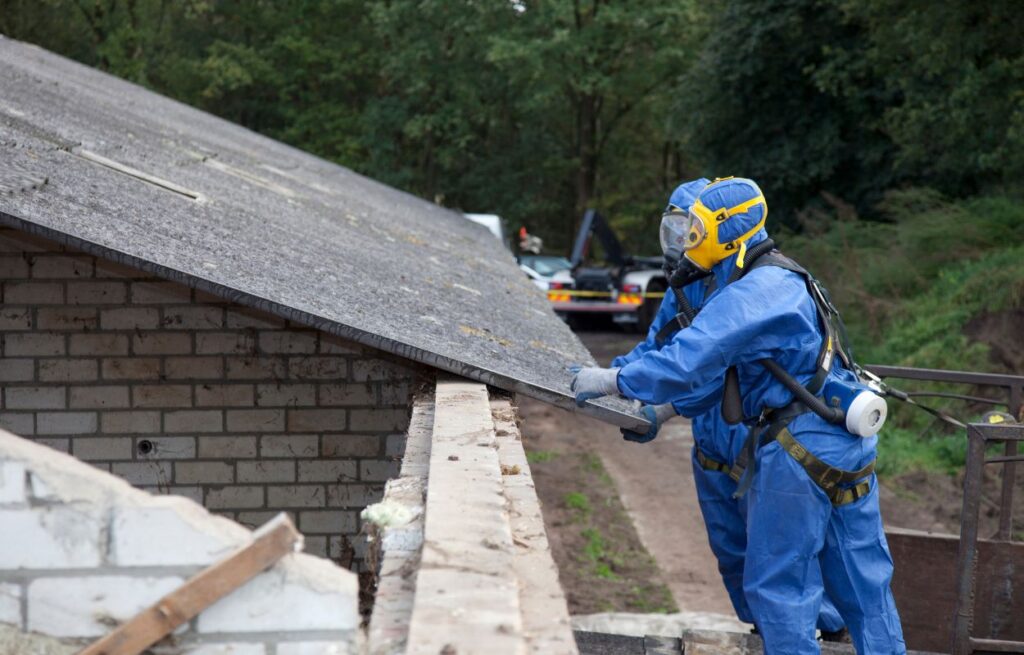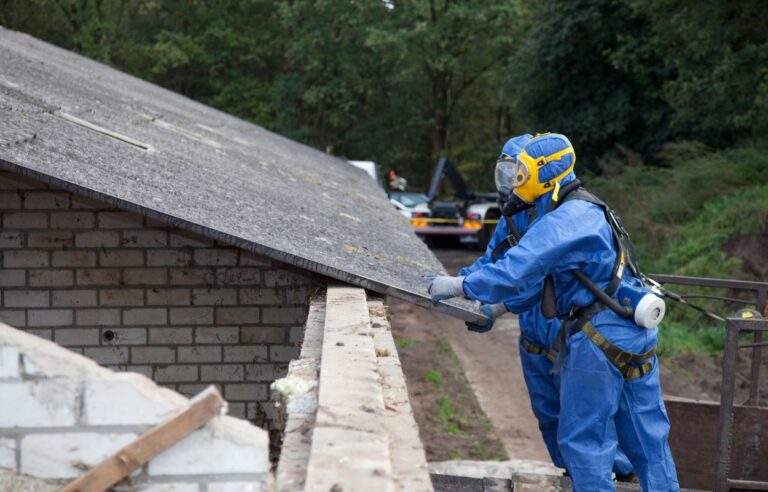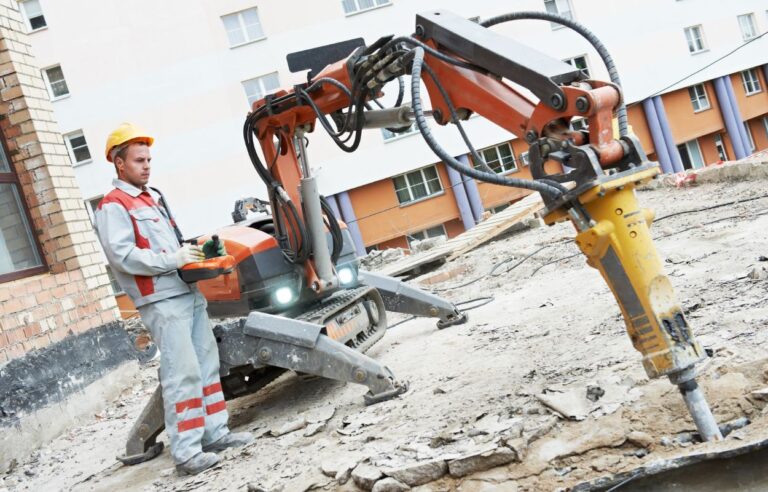Asbestos has a long and complicated history. Once considered a “miracle material,” it was used in everything from insulation to brake pads. But over time, people discovered just how dangerous it really was. The story of asbestos is one of discovery, denial, and eventually, strict regulation. In this blog, we’ll walk through how asbestos went from a construction superstar to a major health risk—and why professional removal is so important today.
Whether you’re a homeowner or a business owner, understanding the history of asbestos can help you make better choices, especially when it comes to asbestos abatement in Campbell River.
WHAT IS ASBESTOS, ANYWAY?
Before we dive into its history, let’s break down what asbestos actually is. Asbestos is a group of naturally occurring minerals. These minerals are made up of tiny fibers that are incredibly strong and heat-resistant. That’s why asbestos became so popular in construction and manufacturing. It doesn’t burn, it insulates well, and it’s tough as nails.
But here’s the problem—those tiny fibers can become airborne. Once they’re in the air, they can be inhaled. And when they get into your lungs, they can cause serious health problems. We’re talking about diseases like asbestosis, lung cancer, and mesothelioma. And unfortunately, the damage can take years or even decades to show up.
ASBESTOS IN ANCIENT TIMES
You might be surprised to learn that asbestos isn’t a modern invention. In fact, people have been using asbestos for thousands of years. The ancient Greeks and Romans used it in everything from clothing to lamp wicks. They even noticed some health issues among the workers who handled it—but they didn’t connect the dots. Back then, the material’s fireproof qualities seemed worth the risk.
Fast forward to the Industrial Revolution, and asbestos use exploded. Factories, shipyards, and railways were built with it. Workers and builders loved how versatile and cheap it was. But again, people didn’t fully understand the health consequences. Or if they did, they didn’t talk about it.
THE BOOM YEARS OF ASBESTOS USE
By the early 1900s, asbestos was everywhere. It was in roofing materials, insulation, cement, floor tiles, and even some household products. In Canada, asbestos mining became a major industry. The town of Asbestos, Quebec, became a hub for production. For many years, asbestos was seen as essential to modern life.
During World War II, asbestos was used heavily in ships, aircraft, and military buildings. Its fireproofing abilities made it perfect for war-related construction. After the war, the building boom of the 1950s and 60s saw even more asbestos used in homes, schools, and commercial buildings. If a structure was built before the 1980s, there’s a good chance it contains asbestos.
THE RISING HEALTH CONCERNS
The first real medical warnings about asbestos started appearing in the early 1900s. Doctors noticed that workers exposed to asbestos had lung problems. By the 1930s and 40s, scientists were linking asbestos exposure to serious illnesses. But the industry kept pushing back. Companies worried about lawsuits and profit losses, so many tried to downplay the dangers.
It wasn’t until the 1960s and 70s that public awareness started to grow. News outlets began reporting on the health risks. Workers who had been exposed decades earlier were being diagnosed with lung disease. Lawsuits started popping up, and the government finally began to take notice.
THE BEGINNING OF REGULATIONS
By the 1970s, countries around the world—including Canada—began restricting asbestos use. Health and safety organizations started regulating how it could be handled. Employers were required to protect workers. But even with these rules, asbestos was still allowed in some materials.
It wasn’t until the late 1980s and 90s that real change began to happen. More bans came into effect, and safer alternatives were developed. In 2018, Canada finally introduced a full ban on asbestos, preventing its import, sale, and use in most products. It was a long time coming, but the health concerns could no longer be ignored.
WHY ASBESTOS IS STILL A CONCERN TODAY
You might think that since asbestos is banned, it’s no longer a problem. Unfortunately, that’s not the case. Many older buildings still contain asbestos materials. As long as those materials are intact and undisturbed, they might not pose a danger. But during renovations, demolitions, or natural wear and tear, those fibers can become airborne.
That’s why asbestos abatement in Campbell River and other communities is still so important. If you’re living in or working on a building built before the 1990s, you need to be careful. Never try to remove asbestos on your own. It’s not a DIY project. Only licensed professionals have the proper equipment and training to do it safely.
THE ROLE OF PROFESSIONAL ABATEMENT TEAMS
So what exactly does an abatement team do? First, they test for asbestos. They collect samples from the suspected areas and send them to a lab. If the material contains asbestos, the team follows strict procedures to remove it. They seal off the area, wear protective suits, and use special tools to prevent fibers from spreading.
After removal, they clean the area thoroughly and make sure it’s safe to occupy again. The process might sound intense, but it’s necessary. Trying to cut corners can lead to serious health risks for you and your family.
WHAT YOU CAN DO TO STAY SAFE
If you own an older home or property, don’t panic. But do stay informed. If you’re planning renovations, always check for asbestos first. Call a certified abatement company to inspect the property. Even if you’re not sure, it’s better to be safe than sorry.
And remember, not all asbestos needs to be removed immediately. Sometimes, professionals may recommend encapsulation. That means sealing the asbestos so it can’t release fibers. But again, only a licensed expert can make that call.
LOOKING BACK—AND MOVING FORWARD
The history of asbestos is a cautionary tale. It reminds us that just because something is popular or widely used doesn’t mean it’s safe. Over time, we’ve learned the hard way just how dangerous asbestos can be. Thankfully, we now have strict regulations, better awareness, and professional services that help protect our health.
But the story isn’t over. There are still many buildings that contain asbestos, especially in older communities. That’s why continued education and awareness are so important. And when it comes to dealing with asbestos, always trust the professionals.
If you’re in the area and need help, don’t hesitate to reach out for asbestos abatement in Campbell River. Protecting your health and your home should always come first.
IN CONCLUSION
Asbestos went from being a trusted building material to one of the most heavily regulated substances out there. Its journey spans ancient civilizations to modern construction sites. Along the way, people have suffered—but we’ve also learned how to stay safe. Now, thanks to education, regulations, and skilled professionals, we can deal with asbestos the right way.
So if you ever find yourself dealing with it, remember—you’re not alone. Help is out there, and your safety is worth every effort.





